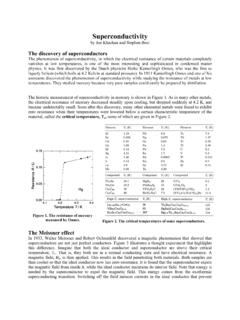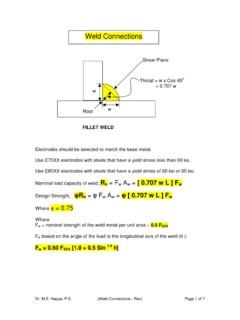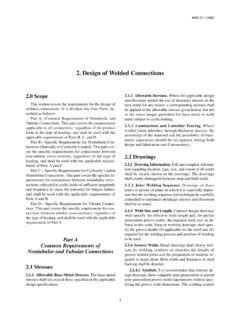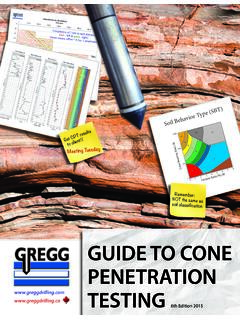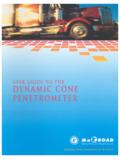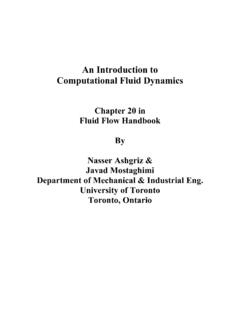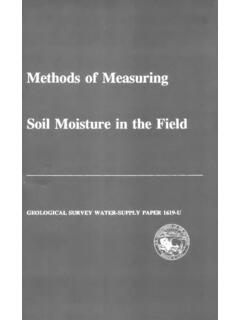Transcription of Section six: Indecent images of children
1 Sexual Offences Guideline Consultation 77 Section SIXS ection six: Indecent images of childrenThis Section covers offences relating to Indecent images of children . The offences under consideration are:possession of an Indecent photograph or pseudo photograph of a child, Criminal Justice Act 1998 Section 160(1) andtaking, making, distributing and sharing an Indecent photograph or pseudo photograph of a child, Protection of children Act 1978 Section 1(1)These offences relate to photographs or pseudo photographs of children . This covers photographs (including moving images ) and also images made, for example, on a computer but which look like real are other areas of legislation74 that deal with prohibited non-photographic images of children ; for example, cartoons and drawings. Such types of prohibited images are not dealt with under this guideline.
2 This is because of the particularly low volume of prosecutions for these offences; there have only ever been six people sentenced for prohibited images since the introduction of the offence in 2009. In addition this guideline does not deal with the possession of extreme pornographic images75 or wider obscene publication offences where children are not depicted in the Indecent images offences have a statutory maximum of five years imprisonment for possession of images and 10 years imprisonment for the distribution, taking or making of such images . Sentences passed for an offence cannot be higher than the statutory maximum. The definition of child for these offences is anyone under 18 years of is an area of offending that, due to advances in technology, has changed since the offences were created and the present guidelines were written by the Sentencing Guidelines Council (SGC).
3 The ease with which images , including moving images , can be shared and downloaded has increased offenders ability to share or trade in such images ; advances in electronic storage capacities have also meant that offenders can retain a much larger volume of images than previously. These developments, amongst others, have shaped the way such offences are committed. Judicial understanding of the way in which offenders behave has also developed see full guideline at page approach taken in this guideline is different from that adopted for other sexual offences. This is because the Council believes that this guideline does not lend itself to the harm and culpability model used for the other offences, often because there will be no identified victim before the court. In a large number of cases, the victim in the image will not have been identified or located.
4 However, harm and culpability remain the focus of this model, albeit expressed in a different way. Where the victim has not been identified the court will consider the nature 74 Coroners and Justice Act 200975 67 Criminal Justice and Immigration Act 200878 Sexual Offences Guideline ConsultationSECTION SIXand level of harm caused by Indecent images . The victim who has been abused to create the image is subjected also to further harm due to the image being recorded and viewed. There is also further harm due to the fact that viewing the images creates a market and demand for these pictures and so leads to further abuse. Mr Justice Keith articulates the approach taken by the court to harm in the case R v Beaney76 where he states: The serious psychological injury which they [the children in the picture] would be at risk of being subjected to arises not merely from what they are being forced to do but also from their knowledge that what they are being forced to do would be viewed by others.
5 It is not difficult to imagine the humiliation and lack of self-worth they are likely to feel. It is not simply the fact that without a market for these images the trade would not flourish. If continue to download and view images of this the offences which they commit can properly be said to contribute to the psychological harm which the children in those images would suffer by virtue of the children s awareness that there were watching them forced to pose and behave in this way. STEP ONED etermining the offence categoryThe Council has included what it believes to be the main factual elements of the offence. The Council has chosen to determine the offence category firstly, by identifying the role of the offender (broadly reflecting culpability) and secondly, by considering the severity of the image (broadly representing harm).
6 Role of the offenderThe Council believes that one of the principal factors to be considered by the sentencer is the offender s role and involvement with the images . Although the discussion around role principally focuses on computer-related crime, it should not be overlooked that a variety of media and methods can be used in the creation, distribution and possession of Indecent photographs of of images : offenders will be placed in this category if they possess images but there is no evidence of distributing, possession with a view to distributing, or involvement in the production of the image. Making of an image by downloading should be distinguished from the category production/taking which is discussed below. If making is charged in relation to downloading and does not involve production/taking of the image then for the purposes of sentencing making by downloading should be treated as : includes both actual distribution and possession of the images with a view to distributing them or showing them or making them available to : includes an offender being involved in the actual taking or making of an image at source; in other words involvement in producing the original image.
7 This is to be distinguished from making by downloading, discussed above under possession. Any offender found guilty of production/taking will be placed in the highest order to provide clarity the Council is proposing to include guidance in the text clarifying how these categories should be used see full guideline at page [2004] EWCA Crim 44977 (1)(c) Protection of children Act 1978 Sexual Offences Guideline Consultation 79 Section SIXS everity of the imageThe existing SGC guideline sets out five levels of prohibited image based on those set out in the judgment in Oliver78 which adapted the image classification found in the Copine The image levels used are:level one images depicting erotic posing with no sexual activity;level two non-penetrative sexual activity between children , or solo masturbation by a child.
8 Level three non-penetrative sexual activity between adults and children ;level four penetrative sexual activity involving a child or children or both children and adults; andlevel five sadism or penetration of, or by, an Council is sensitive to the fact that classification of images can be a difficult and resource intensive job for the investigating and prosecuting authorities. The Council is also aware that the images before the court may give only a partial indication of the abuse suffered by the victim in the image, and image level alone does not give a complete account of the offender s behaviour. However, the court can only sentence what is before it and the Council believes that, despite the limitations around using image level, the severity of the sexual offence depicted in the image can be an initial guide to the harm that will have been suffered by the victim the challenges presented by the classification of images , the Council proposes the levels of images can be simplified further.
9 The proposed levels are set out A: images involving penetrative sexual activity ; possession of images involving sexual activity with an animal or sadism . The Council believes that any image showing a child involved in penetrative sexual activity should be placed in the highest category. In line with the other sexual offences involving a child discussed in Section five page 36, it is envisaged this would involve penetration of the vagina or anus (using body or object) and penile penetration of the mouth in either case by, or of, the victim. It is not proposed that a distinction is made between penetrative activity between an adult and child and penetrative activity between is also intended that category A includes images involving sexual activity with an animal or sadism. In the existing SGC guideline, penetrative activity and sadism and penetration of, or by, an animal are expressed as different levels of image (four and five respectively) but they attract exactly the same sentence starting points and ranges.
10 The Council has therefore placed both of these into category Council has changed the wording penetration of, or by, an animal to sexual activity involving an animal to ensure that it covers images involving non-penetrative activity and addresses a difficulty that currently arises. This difficulty is highlighted in the CPS charging guidance in relation to the current categorisation which states: A question is raised as to what happens if a photograph shows a non-penetrative sexual act involving an animal (for example an animal licking the sexual organs of a child). A strict interpretation of level five would suggest that it could not come within that level but neither would it fit into any other level other than, conceivably, level one 8078 [2003] 1 Cr App R 28 CA79 The Copine project (Combating Paedophile information networks in Europe) at the University of Cork developed a scale to categorise child abuse images .


